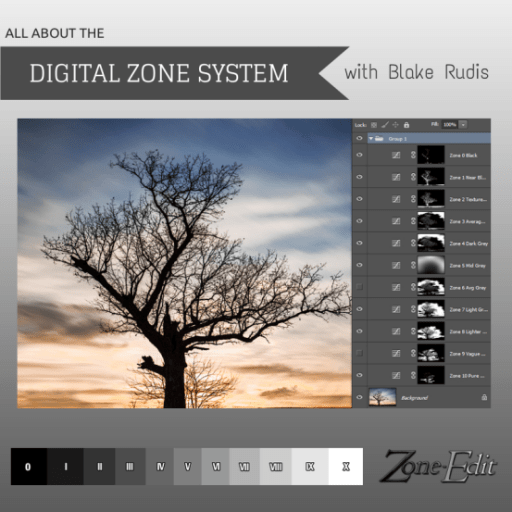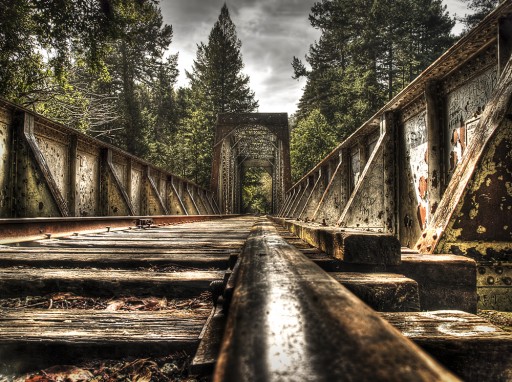I was honored when Topaz Labs asked to interview me on their blog about the Digital Zone System. They asked several very great questions that many people ask for clarification about how it works and what makes it so different from the original Zone System. I will not go into too much detail about it here because you can read all about it in the interview. I would, however, like to elaborate more on finding your personal workflow when processing photos.
Overcoming Frustration with Your Workflow
I really started to hit photo post processing hard about 4 years ago (almost exactly). I was, like many, very frustrated with my photography at the time. I would process my photos in Photoshop with what I thought at the time was enough. That consisted of the Levels Adjustment and that was about it. The Curve intimidated me and I had no clue what saturation was at the time.
Four years ago, Photographers were not so eager to share their secrets. I would scour through popular sites like Flickr and Redbubble asking the photographers I thought were incredible for advice. I would either get no response or the information given would be vague. There is nothing wrong with that, I understand why they wouldn’t be so eager to share, after all a magician never shares their secrets right?
The frustration with my images welled up so much that I almost gave up. I was about to sell my camera and go back to painting. All because I couldn’t get my photos to look like I wanted them to. Then I discovered HDR Photography and began shooting my photos with a whole new outlook.
I became addicted.
Finding Your Workflow
With the onset of the new HDR endeavor, I started reading more photography books. I dug deep into other photographers workflows, Rick Sammons, Matt Kloskowski, and RC Concepcion to name a few. Through their teachings I began to understand the complexities of the Curves Adjustment Layer, the capabilities of Selective Saturation, and above all I was learning how to use them non-destructively.
I began putting all of these pieces together to create a system. This system consisted of running an Action that would run the Curves Adjustment, Levels Adjustment, and Saturation. It would then run a noise reduction and a quick High Pass Sharpen.
This was the first systematic workflow I created and I still offer it in the Tidbits of Awesomeness Actions Package. I used this system for a long time, but I soon learned how limited its capabilities were and I began “Death Spiraling” into the thought that one system could be used for every photograph.
After that I was back to square one. I started incorporating more pieces to a workflow and tried once again to make it a system. I found that not every “system” worked for every photograph. So I began trying new things and accepting the fact that every photograph could not receive the same treatment. That led to a lot of guesswork every time I edited my pictures.
I sought ought greener pastures…
Old Tricks, New Dogs
In October of 2013 I was doing dishes, there is something about running water and my thought process. I do the best thinking in the shower. Anyhow, I was doing dishes and thinking about creating a new “workflow system”. I knew there had to be a way to create a system to make awesome photographs, I was pretty close with the first one.

Then it hit me, I thought back to High School when I learned Ansel Adam’s Zone System. I remembered the pain of processing my negatives at different times to emulate the scales of the zones. It was perilous at the time, I couldn’t stand it, but I remembered how systematic it was. The light clicked and I thought, “That’s It” break down the photograph into the separate zones and post process the Zones individually!
In the past I had used Luminosity Masks and liked them. Although, I did not like that they were made from Channels as the back and forth process was rather annoying, going from Channels to Layers and back again. I wanted my Digital Zone System to be simple masks of Curves Adjustments. I didn’t want anything crazy hard to follow and nothing that a beginner wouldn’t be able to handle without a bit of direction.
I figured if this system has been working for 75 years to make images why couldn’t it be used to edit them as well? After several weeks of creating, modifying, destroying, and recreating a solid Action I finally had something I could work with. I have been using this system ever since…on every photograph that comes through my workflow.
On Building Your Workflow
I don’t just use the Digital Zone System to create my images. I also don’t always start with it or finish with it either. I do many things to my photographs and what I have learned over time, as I have stated throughout, the same workflow does not work for every photo. Sometimes I use a lot of Topaz Plugins, other times I do not. Sometimes I start with the Zone System, other times I finish with it. However, I always work it into my workflow somehow.
The other day I processed a portrait photo of my son without using the Digital Zone System. I thought it looked great! I walked away from it for a few days and then opened it back up and ran it through the Zone System. To my surprise, it looked even better.
Build your workflow fluidly, allow it to fluctuate, and do not death spiral into one set way! All too often we get stuck in a routine, which is okay from time to time, but try new things. Always let your workflow remain fluid and walk away before you get too frustrated, but remember to come back with a vengeance!!!













…WOW that portrait looks good, man! Your son is growing sooo fast Blake! Great insight and “thank you” for this read! I am having a blast with the Zone System. So much so, that I am going into my older shots to really do some adjustments and make them truly “pop”. The Zone System is a high quality, thought out process that really works and I am very fortunate to have it. Thanks Blake and take care my friend!
With Great Respect, Tal Pipkin
Thanks! My son is a ham. I had all of .5 seconds to snag this shot. I said Michael lift your glasses with your hand, he put up two. I said no, one hand. This shot was the act of him lifting that one hand, 2 seconds later he was b-lining to the front door! Thank goodness for TTL Flash!
I am so glad the Zone System is making its way into your workflow. I love hearing testimonials like this. I was so worried that I would be the only one that would benefit from it that I hesitated to put out the training package. However, hearing this just fuels the fire… Just wait till you see what May and June have in store 😉
And Thank you, Tal, for always being a supportive friend through this whole process. I value our email correspondence and your inspirational comments more than you may know. Take care my friend!
Having just finished viewing your videos on the digital zone system I was very impressed as it was well made and very educational. We’ll worth the money and very ease to follow. I am now looking forward to start using this system.
Nick
Awesome! I am so glad to hear that. I really appreciate your feedback a lot. That means more to me than you know. If you need any help with it, feel free to contact me. I am more than happy to help!
Awsom!! when i start reading your (Overcoming Frustration with Your Workflow) for a moment I thought you were talking about myself…….I was so excited when I got my first camera and how excited i was when i took my first photo……aaaaahhhh it was such a mess…….I was so disappointed,…..nobody wanted to help me and i surfed the internet and came across Trey Ratclif and knew that’s how I wanted my photo”s to look…I loved what HDR made to a photo, later I got myself Topaz Adjust and played around, one of my photo’s just popped and I loved the way it look but soon realized not every photo reacted the same and it’s not fun any more …….this afternoon I stumbled across your site and I love it, thanks for all your tutorials it’s going keep me busy for a while because I have still a great deal to learn and the video I’ve watched made Topaz clarity more friendly to me, sometimes peoples tutorials just confuses me but yours are very helpful….my English is not very good but thanks again
Sorry if this is posted in the wrong spot. I figured it was safe since you were covering workflow. How do you manage your assets seeing how you don’t use Lightroom, but rather ACR? And as a follow up how do you edit multiple exposures at once, like Lightroom allows through synching multiple exposures? I use Lightroom for those two reasons but cant stand how I have to make multiple copies of the same image to make edits with other programs (PS included) and plugins, and prefer Photoshop so much more.
Blake,
I have always done a lot of art, watercolor primarily, four years ago I moved exclusively into digital art. Most recently I have been doing a lot of death spiraling—looking to clean up my workflow, which often includes Topaz Plugins. I have used Photoshop Elements and Pixelmator in the past, but I never quite felt satisfied. The more I learned, the crazier my workflow became; I found I was focusing more and more on all the different techniques—and not on my passion—the creation of the art. I have been aware of your work through various Topaz Tutorials. Today, I stumbled into your Digital Zone System—and I feel this is really what I need to get focused!
I am also about to purchase Affinity Photo; for me its another “Ah Hah Moment!” Just like my discovery today of your Digital Zone System.
I am coming from a strong artistic perspective, and a beginner photo perspective.
But I really, really want to incorporate Affinity Photo and your Digital Zone System into my post processing of my artwork.
Hence, my question: Is your Digital Zone System available for Affinity Photo?
Any Thoughts?